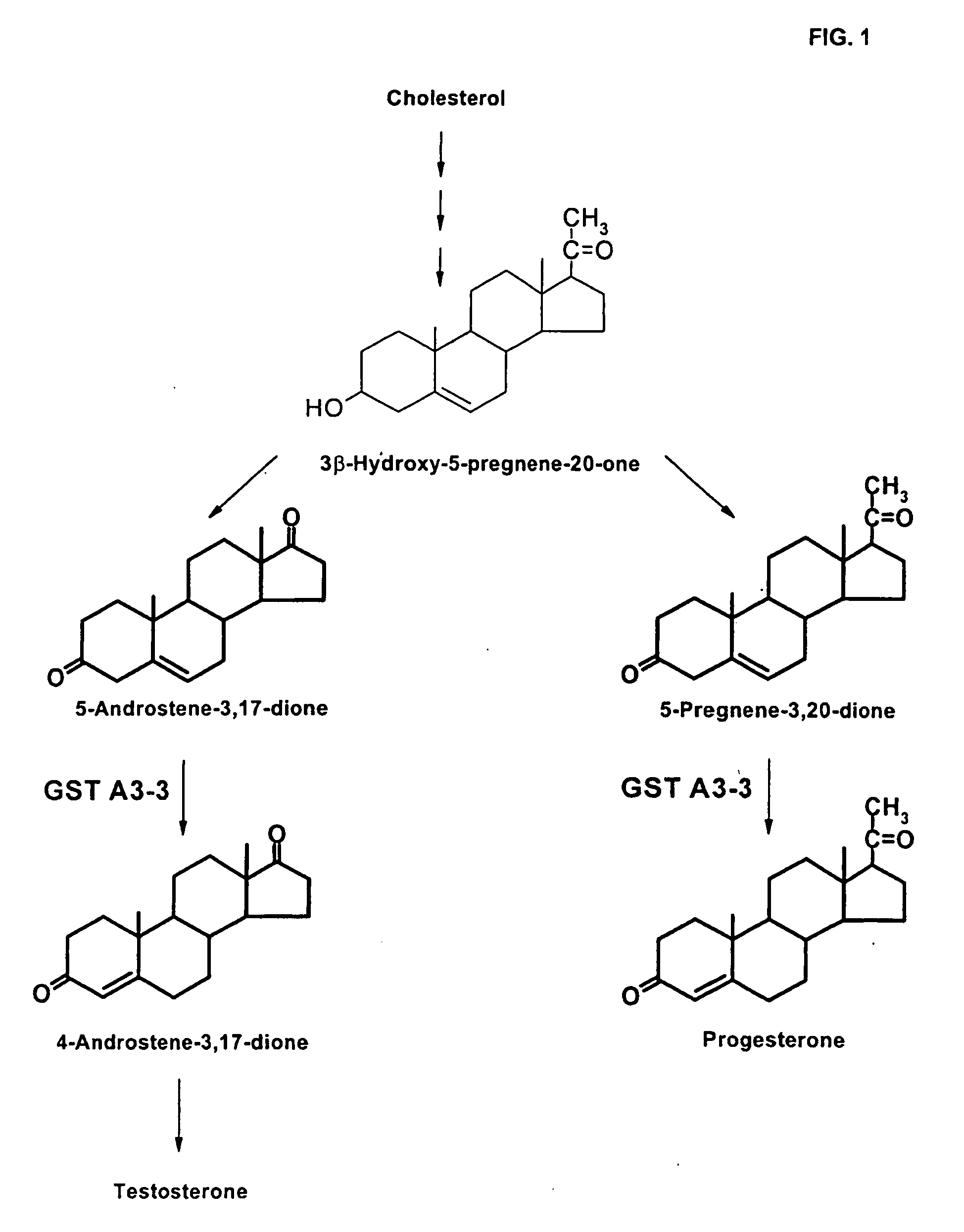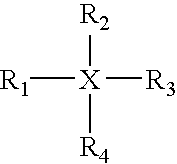Inhibitors of gst a3-3 and gst a1-1 for the treatment of cancer
a technology of gst and inhibitors, which is applied in the direction of plant growth regulators, biocide, and tripeptide ingredients, can solve the problems of ineffective steroid isomerase reaction inhibitors and unpublished inhibition data, and achieve the effect of reducing the tissue level of active gst and inhibiting enzymatic activity
- Summary
- Abstract
- Description
- Claims
- Application Information
AI Technical Summary
Benefits of technology
Problems solved by technology
Method used
Image
Examples
Embodiment Construction
Experimental Procedures
[0024] Materials—1-Chloro-2,4-dinitrobenzene (CDNB) and reduced glutathione (GSH) can be purchased from Sigma (St. Louis, Mo.), phenethylisothiocyanate from Aldrich (Milwaukee, Wis.), and Δ5-androstene-3,17-dione from Steraloids Inc. (Newport, R.I.).
[0025] Expression and purification of GSTs—Human GST A3-3 and its homologous GST proteins of the Alpha class were expressed from corresponding cDNA carried by the pET-21a(+) vector in E. coli BL-21(DE3) (2). The cells were grown to OD600=0.7 and expression was induced by addition of 1 mM IPTG. The cells were grown for four hours, collected by centrifugation, and lysed using ultrasonication. The lysate was desalted on a PD-10 gel filtration column (Amersham Biosciences) and the proteins were eluted in 20 mM sodium phosphate, pH 7.0, and were subsequently loaded onto a HiTrap SP cation exchanger (Amersham Biosciences). The proteins were eluted using a salt gradient. This single purification step yielded highly pur...
PUM
| Property | Measurement | Unit |
|---|---|---|
| Concentration | aaaaa | aaaaa |
| Inhibition | aaaaa | aaaaa |
Abstract
Description
Claims
Application Information
 Login to view more
Login to view more - R&D Engineer
- R&D Manager
- IP Professional
- Industry Leading Data Capabilities
- Powerful AI technology
- Patent DNA Extraction
Browse by: Latest US Patents, China's latest patents, Technical Efficacy Thesaurus, Application Domain, Technology Topic.
© 2024 PatSnap. All rights reserved.Legal|Privacy policy|Modern Slavery Act Transparency Statement|Sitemap



